|
Masks, but not those masks, are a staple of secret identities. (Photo from Unsplash by Julio Rionaldo) It’s been a while since my last trope discussion, so I thought it was time for another! This week I researched a super popular trope, secret identities. Get it? Super. Like super heroes.
Where Did This Start? I started by reading about secret identities on TV Tropes. There are about thirty-two related tropes, including someone falling in love with the hero identity, or loving the hero and hating the secret identity (or vice versa), and more. So many tropes that the original idea of secret identities must be incredibly old. Indeed, it is. You can see secret identities in fairy tales, like Cinderella (at the ball, though in most versions this identity doesn't get a name) and Beauty and the Beast (the secretly beautiful witch who turns the prince into a beast), and Mulan (in the army). TV Tropes cited a medieval Scottish story, Roswall and Lillian, as an example in which a steward steals Prince Roswall’s identity and plans to marry Princess Lillian. Roswall, of course, succeeds in getting the Princess in the end when his secret identity (which is his original one: a prince) is revealed. Even in Greek myths, gods would hide their identities and interact with humans. Technically speaking, secret or hidden identities are such an old concept in storytelling that we can’t quite pinpoint a true origin. What about a secret identity for unsanctioned acts of heroism? That’s more specific. One could argue Robin Hood was almost there, but since it was clear to everyone involved that he was Robin of Loxley, his identity doesn’t qualify as secret. Let’s look at some others: Superman (aka Clark Kent) made his first appearance in a short story, The Reign of Superman, in 1933, published in a science fiction magazine. Most people know him better from his second appearance, which was in 1938 in Action Comics #1 from DC Comics. Zorro (aka Diego Vega) made his first appearance in 1919 in a series of magazine instalments later brought together as the novel The Curse of Capistrano by Johnston McCulley. Zorro got his first movie in 1920 (a silent one, but it still counts!) The Scarlet Pimpernel (aka Sir Percy Blakeney) appeared in a play named for the hero in 1903 (and novel in 1905) by Baroness Emma Orczy. The Scarlet Pimpernel saved aristocrats from being beheaded by mobs after the French Revolution made that seem pretty fashionable. His public persona is a rich, stylish, but seemingly useless man that no one would suspect of being a swordsman. Is saving rich people terribly heroic? I suppose it would be to the rich people. At least the concept is right for my purposes here. At 1903, The Scarlet Pimpernel is the first clear example of a character consistently using a secret identity to perform acts that are heroic. I was surprised to learn this secret hero genre was pretty much solidified in the literary world by a woman author. Hats off to the Baroness! Why Have Secret Identities? After that deep dive, I asked myself why did these characters hide their identities? Modern heroes do it to avoid their enemies and/or protect their loved ones. Older heroes did this as well, though there was often an air of vigilantism to those stories, where the secret identity would suffer legal consequences if they were found out. Other, less vigilante-focused instances of secret identities also protected characters from social consequences (Cinderella, Mulan) or allowed more freedom (Mulan, Zeus). Still others weren’t the character’s choice (Roswall). Plenty of character motivations available to meld or co-opt for your own story. Should Your Characters Have Secret Identities? It’s all dependent on your plot with this one. A super hero book may obviously require a clear secret identity to be effective. However, going undercover in a crime novel, using a fake ID in a contemporary novel, or masquerading a monster as human in a horror could all also qualify as secret identities. The most important thing is to be sure your reader can follow with what’s going on. If you don’t clearly connect identity 1 to identity 2, your reader may not know who’s behind the metaphorical (or real) mask and get completely lost. While a TV or movie has the actor, or at least their voice, to help guide the audience, you have to be more deliberate. One trick is to ensure you don’t introduce an entire team at once, but build it slowly to allow the reader to remember who is who. That’s it for this trope discussion. Who is your favorite hero with a secret identity? Have you written any secret or false identities in your work? Let’s discuss in the comments! Here are some sources for more reading on this topic: TV Tropes article about Secret Identities Wikipedia article summarizing The Scarlet Pimpernel Wikipedia article summarizing Zorro Wikipedia article about Action Comics #1 More about Baroness Emma Orczy
0 Comments
Clue's best impression of the book cover. Photo by Kate Ota 2021 Content warning: incest, infant death
I don't typically do so many book reviews in a row, but in five weeks of commuting, I've read five books. Nearly six. So, you'll be getting book reviews for a while. I'll do my best to switch it up next week! The Last Neanderthal by Claire Cameron is an adult dual POV book. The first is one of the last living Neanderthals (we’ll call it 40,000 years ago) and the second is approximately modern day. The main POV belongs to the Neanderthal, Girl, who, as the title suggests, becomes the last Neanderthal, or at least one of the last. And you know that fact as her family dies off in various accidents. She is left with one adopted sibling, who you realize pretty quickly is not a Neanderthal. She must take care of him as they attempt to find other Neanderthals. The second POV is a modern researcher, Rose, who races against her pregnancy to finish a digging up a Neanderthal skeleton. Her chapters were few and far between, but showed the problems that modern women still face in the workplace, especially academia. Rose also had marital strains with her long-distance husband. I had a couple problems with the book. The Neanderthal chapters went a little too far on the altered linguistics for my taste. There was also little dialogue, which the author gave evidence for, but it made it a less enjoyable read. I also did not appreciate the incest scenes. Yes, it probably happened as that species died off. No, I don’t want to be entertained by it. Rose’s modern POV didn’t get enough page space, even though it was interesting. I supremely disliked Rose’s relationship with her husband. The book covered the discoveries about Neanderthals (through its pub date, 2017) very well. It felt more realistic to my understanding than other pieces of media I won’t name. It also seemed to do justice to the realities of an archaeological dig and the slow pace. Overall, it was fine. It felt realistic, but maybe too much so with the incest. Readers who are interested in ancient humans or archaeology may enjoy it. It would probably appeal to fans of Clan of the Cave Bear (lots of parallels between the two). It is not for you if incest or infant death is triggering or not your taste. It’s also not for you if you want high action or a quick pace. Have you read The Last Neanderthal? Did you enjoy it? What other Neanderthal books are worth reading? Let’s discuss in the comments! A pretty good recreation by Clue of the cover of Speak the Ocean. Photo by Kate Ota 2021 This week I read Speak the Ocean by Rebecca Enzor. I’d seen her on Twitter before, but what got me to read her book was her interview on Queries, Qualms, and Quirks, a podcast by Sarah Nicolas. That interview gave me a better idea of what the book was about and I realized it would be a great comp title for my WIP!
Speak the Ocean is a dual POV adult contemporary fantasy novel about human Finn and mermaid Erie. Finn works at Oceanica, basically a mermaid-themed Sea World complete with mermaid shows ala Shamu. Erie is a mermaid princess in the Seadom where Mer have been disappearing for years and no one knows why. Of course, the reader knows why: Oceanica has been hunting them for their shows and research. Mer are very poorly treated at Oceanica. They also tend to be very dangerous, as evidenced by the opening scene where Finn has to euthanize one who killed their trainer. When Mer die, they turn into sea foam, like the classic versions of The Little Mermaid (pre-Disney). However, Erie is captured next and Finn is made her trainer, his first opportunity to train instead of just cleaning tanks. His assistant is Jen, who has a much more tender heart than other employees and she advocates for treating Erie better than other Mer, a strategy which leads to Finn bonding with Erie. Eventually Finn faces a choice: keep Erie trapped forever and boost his career at the expense of a sentient creature, or somehow free Erie. It’s a little bit Black Fish, a little Free Willy, and a Little Mermaid. While I thought most of the events were predictable (possibly because I’ve been studying plot so much recently) there were still moments of surprise. I tried to read this only on my commute, but I just had to finish it at home yesterday. I thought it was well balanced between the POVs and Enzor did a great job of writing from Erie’s POV without the reader being as confused as Erie was about the world around her. I also liked that the stakes were extremely personal, not world-ending, which feels a bit rare in fantasy at the moment. On the downside, Erie’s POV did cause some problems for me because her narration used words that she then was confused about hearing from the humans. Yes, I realize she was thinking in ocean words, not air words, but it still threw me off at first. I was also confused about how Finn actually felt about Erie. I wasn’t sure if he really loved her romantically or like how you love a pet. Especially confusing because of his fraught relationship with Jen. Overall, I recommend this book for anyone who loves mermaids, contemporary fantasy, or even scientific ethics problems, like Jurassic Park. There’s a smattering of romance, too. It’s not for you if you can’t handle blood or on the page sex scenes. Have you read Speak the Ocean? What did you think? Let’s discuss! This might be how your soul feels after a rough critique. Pick up those pieces and start editing. Photo by Kate Ota 2019 I’m in the editing phase of my book, which is always the longest, and I’m soliciting feedback from many sources. And then getting all that feedback. I’ve written about critique groups and how to critique, but never explained my methods for what happens next. It can be overwhelming to receive a lot of feedback at once and some people will set that aside and not use it out of a sense of dread. Here’s my method for tackling feedback.
Step 1: Take Notes During the Critique If you are doing a live critique, take notes as people talk. Even if they will send you an annotated document later, they might say something spontaneous that you don’t want to lose. You can decide if you want to write down who says what, if that matters to you. For example, if someone who shares the character’s identity says “I’d change X about how you portray Y about this character” I make sure to write down who said that so I give their opinion extra weight. If people repeat the same comment, I add a little x2 or x3 to a comment to save time. When I see this, I know this is something I need to change. If people disagree, I write who was on what side (ex. John said he likes this character but Betty hated him). This allows me to later say, aha so Betty hated this character and this other element, I wonder if fixing that element then changes her opinion on the character. Most of the time though, it may just come down to people's opinions and knowing who said what won't really matter. I also take notes if someone says something that sparks an idea in my mind. I’ll mark this with “note from me” so I don’t later think someone else was being rather forward with ideas. Step 2: Consolidate Your Notes I take all the notes I receive and transfer them into one document. I use track changes and comments in Word and will edit the document with ALL of the edits sent to me, regardless of if I agree or not. This is not the time to judge comments, only copy them. I add my notes from the live critique to the relevant scenes/chapters so I don’t have to scroll to the bottom of the document. In the end, I usually have a very marked up document, but at least it’s only one. Step 3: Prepare Your Mindset One thing people have a hard time with when receiving feedback is how it feels emotionally. It can feel like people hate your writing or you as a person or both. You need to go into your edits with the following mindset: everything everyone has written is only to help you. This needs to be your mantra. I realize there are bad actors out there who will send hate through the internet, and that's a risk you take. However, especially if you take my advice about trying live (or virtually-live) groups, you'll find that other writers really want to help. Everything everyone has written is only to help you. They are trying to help you make this book better and every edit choose to take is doing that. One more time before you dive into edits: everything everyone has written is only to help you. Step 4: Make the Edits While I receive my edits in Word, I write in Scrivener. This is because I love Scrivener for novels in general, but it has the added bonus of forcing me to think about every single edit rather than just hitting the accept button. I work linearly through the document, and will save big edits (such as over used words throughout or all of the dialogue needing tweaking, etc.) for the end. The exception is if I’m re-writing a significant portion of the scene, that is something I’ll do first, then edit anything that carried over. Here’s the sticky point for some people: how do you decide which edits to take? To me, it depends on the category of edits:
The nice thing about getting critiques is that no one watches you make the edits. Don’t feel guilty for saying no to a comment, and don’t feel like you’re a bad writer for taking one. The key to editing is humility: we're all human, we all make mistakes, and we can fix those mistakes. Step 5: Final Polish Once I’ve finished transferring in my edits, I send it through an AI grammar checker. Mine is ProWritingAid, but I’ve heard good things about lots of other programs. Which program I use is not a hill I’d die on. This is just a final polish and helps me catch some smaller, subtler errors. Usually these are errors generated by the process of editing itself. It also helps me make sure I’m not too pronoun heavy, that my sentences vary in length, etc. I recommend these programs as a final polish, but not an initial one. You need humans for that! Editing Resources: There are a ton of editing resources out there. Checklists for individual chapters, beat sheets for entire plot lines, etc. If you find yourself returning to the same problems, keep some of those resources nearby. I like to keep The Emotion Thesaurus handy because I consistently don’t show enough emotion with my characters. That’s my feedback wrangling process. Did it help you? Do you have your own method you’d like to share? Let’s discuss in the comments! Sorry for the May hiatus. The month really took over and I got lost in the fray. Back to my regularly scheduled blog posts!
I keep my house relatively clean, but I always have a few nooks and crannies where I store whole bunch of stuff. Junk drawers and closet shelves and plastic drawer sets that look organized when shut, but God forbid you open them. I cleaned one such space this weekend: a set of plastic drawers I’ve had since college. This involved two drawers of college and grad school file-folders and notebooks and a hodge-podge of random items. (Including, thankfully, a second key to my car that I’ve been looking for for about a year.) One such random item was a spiral bound “text book” from the only creative writing class I took in college. I still remember being pissed I had to pay nearly twenty bucks for what my prof called a “packet.” It’s 213 pages (front and back printed) so in hindsight twenty bucks isn’t bad for college materials. This tome is more than half short stories I had to analyze. Sorry to those stories, I probably didn’t analyze any of them properly. Theme was never my strong suit in school. Though now I might be able to get a better grip on it, since I’ve been reading a lot of writing craft books recently. Anyway, the second part of this packet is writing advice. I opened it expecting it to be some sort of “I’m a Writing God and here are my Rules!” Instead, the first section says there are rules, but you need to learn them before you break them; and when you break them it better be on purpose. Pleased, I decided to peruse the rest. There are sections on plot, including how to come up with a plot or get out of being stuck, character, a lot on showing and telling (with great examples and details on when to tell instead), and even revision tips. This thing has a lot boiled into a small space. And yes, we also had to buy Burroway’s Writing Fiction, which I also kept. Based on how little I highlighted, I think we only read one chapter for class. I will definitely be revisiting this packet. I put it on my writing craft shelf, even though it’s spiral bound and battered from bouncing around in my old backpack. But hey, don’t just a book—or packet—by its card-stock cover. Did you keep any materials from high school, college, or grad school that you’ve kept and used? Let’s discuss in the comments. Wisteria gets its name from the American anatomist Casper Wistar. Photo by Kate Ota 2019 When I was a kid, any time I asked my dad about what a word meant, he’d start with the word's origin, the etymology. Never a dictionary-fresh definition. He had me look at the word as a thing that was built and created over time, not a stagnant object. It used to drive me nuts. “Just tell me what incongruent means, Dad!” And yet, by the time I took the ACT and SAT, I knew all sorts of random word parts and guessed my way through words I’d never seen before, to excellent scores I might add. To this day, if I hear a new word, I wonder about the etymology. It’s the most common thing I google. When I was teaching anatomy, I constantly emphasized word parts for my students. If I had continued teaching (they didn’t even offer me health insurance, so you see why I quit) then I would have made my students an anatomy word-part cheat sheet to keep for the semester. Things like osteo referring to bones, myo referring to muscles, and chond referring to cartilage would have made the list. This has obviously helped me as a reader. But can etymology help writers? Unfortunately, it can’t help with mixing up very similar words in your writing (like lay vs lie) because their etymology is also very similar. (Trust me, I checked. That was the original idea for this post but it went nowhere.) However, etymology is a huge help in worldbuilding. Let’s look at some examples. Spells in Harry Potter Most of the spells in Harry Potter have a Latin origin (a few are Greek). This does two things: one, it helps make all the spells have a unified feel; and two, it helps the readers guess or keep track of the spells’ meanings. Since HP is middle grade, it also helps the young readers learn some classic word-parts. Examples: Crucio: the unforgivable curse causing intense pain. This is from cruciate, Latin for a cross shape. And guess what the cross was used for? That’s right, it was used to torture and kill people, most notably Jesus (there’s a lot of Jesus allusions in HP.) Lumos: the light creating spell. This comes from lumen, Latin for light, and the Latin suffix os, to have. Every Day Words from Shadow and Bone Shadow and Bone (book one of the Grishaverse) by Leigh Bardugo was recently adapted into a Netflix series. (I quite enjoyed it! Though there was a lot of racism thrown at the MC, which wasn't necessary.) The main nation, Ravka, clearly has a Russian feel. One of the best ways this is accomplished is through the words. Examples: Grisha: the people who have magical powers. This comes from the Russian name for Gregory, which means watchful and connects to the biblical Grigori. Since they’re a type of army/defenders, being watchful makes sense. Otkazat’sya: the people who aren’t Grisha. It’s actually the Russian verb for to abandon, that Bardugo co-opted into a noun (which is a process called nominalization) and added the Russian suffix -sya. Bardugo added this suffix to other words in the book as well, even if the rest of the word was less Russian. A neat trick to keep the vibe of a place without totally copying the language or confusing readers for whom Russian is not familiar. Names in Avatar the Last Airbender Anyone who has seen the show will tell you Avatar is set in an Asian-inspired world. Specific cities and countries are more closely tied to specific Asian nations, and this is done through architecture, art, music, and names. Not a lot of words were made up or derived from and added onto, like the last two examples. Of course, Avatar had the advantage of being a visual medium first, so the art helped sell the overall vibe more than language needed to (like it would in books.) Examples: Dai Li: the secret police in the city Ba Sing Se. This comes from Chinese. Dai means to wear, and Li refers to a hat, specifically the pointed top and wide brim shape these characters wear. But the name has more meaning than that. Lieutenant General Dai Li was a real person in the Chinese government in the first half of the 1900s. He led a secret military police and a paramilitary fascist group. He was extremely feared and his 50,000 agents were more than spies, they could also be assassins. Zuko: the initial antagonist and eventual example of redemption. The Chinese meaning of this name can be failure or loved one, which is perfect for the character himself, as those were the two paths he saw for himself. However, it’s notable that other languages also lay claim to this name. The Filipino origin can be translated as angry or surrender—which both still work for the character. I found another origin from Zulu, where it means glory. Again, it still matches the character, if you focus on season 3. Clearly, looking at the etymology of the words in your fictional world, from spells to everyday terms to names, can give the world a sense of unity through linguistics, or add a sense of differentiation between multiple locales within your world, should you use more than one language base. Digging into the etymology of these examples was super fun for me and I learned more about the worlds as well. Building meaning into your fictional terms is a great Easter Egg for fans to enjoy beyond the story on the page. Have you ever played with etymology in your worldbuilding? Did you stick to the familiar (Latin, Greek, Germanic) or go somewhere farther from English? Let’s discuss in the comments! Sources in case you want to dig deeper: Harry Potter spell etymology Leigh Bardugo talks the etymology in Shadow and Bone Avatar the Last Airbender etymology The pictures are all not mine! Last week I reviewed World Anvil, the worldbuilding website but my biggest disappointment was the lack of map making capacity, especially because it featured so many images of maps! So I checked out the list of websites World Anvil recommended for mapmaking and spotted Inkarnate.
Overview Inkarnate is a mapmaking website. It’s advertised as being for making maps for fantasy worlds for game play (like D&D), writing, game design, etc. There are two tiers: paid and free. Free version: It’s free! You don’t even enter credit card info. It’s not a trial, it’s always free. Paid: You can pay monthly ($5/month) or annually ($35) and access the same material either way. The pro version allows you to access more items to put on your maps (like walls or different trees and cities), more frequent art updates, other mapmaking tools (like the advanced mode to specialize and have more freedom during creation), commercial use of your maps, higher resolution map exporting, and allows for your custom art alongside their Inkarnate art. Either free or paid, your maps are always only visible to you unless you “publish” it on their website. Both versions allow you to export (i.e. download) to your computer and/or save your map to your account. In the map making itself, there are different styles. They’re broken down into categories: world maps (Fantasy or Parchment style), Regions, Cities and Villages (including the optional Watercolor style), and Battlemaps (which also includes the interior of buildings). My Experience Inkarnate is aimed at fantasy worlds, and by that it’s clear they mean Tolkein-esque fantasy. If you’ve got something set in a non-medieval-Europe world, this is going to be a stretch for you. However, it can still work for zoomed-out big picture maps, which is how I tried to use it for my sci-fi. There’s a fairly helpful FAQ, but the tool itself can be difficult to figure out. It didn’t even use normal scrolling, so I kept accidentally zooming when I wanted to go right. I’m not exactly the most tech savvy person, but I’m also far from being computer illiterate. I found the learning curve frustrating. It took me three tries to get a map even close to what I’d pictured in my head. In the end (I’d say maybe an hour later) I was very happy with my map. I’d show it, but it’s full of spoilers for my book. Things you can do: alter the type of land, draw the location of land and water, add trees and mountains, add some basic human-made-items like a city/bridge/windmill. However more options were available for the paid subscription, such as buildings inspired by a small handful of non-European locales (those categories were called Desert and East so don’t get your hopes too high about accuracy or specificity), other types of land, paths, and grids. You can also add generic markers (I used these to mark where events take place) and custom labels. I had fun making my map once I knew how to work the system, and it looks much better than the one I made in Paint! Is It Worth It? The free version is actually really great, once you learn it. I was able to make what I needed and it looks like an adult made it instead of a child. However, the paid version is very affordable and if you needed to make a map for a self-pub book or other business project, then it would be great for you. If you’re just playing with it or want it for your own reference (or to send to a professional artist as a reference to remake your map in a style that better fits your non-Tolkein-eqsue thing) then I think the free version is great! The biggest investment is the time to learn the tools. And not just read the directions, but actually understand how to do it. For example, there’s no scrolling, and attempting to scroll messes with the zoom. That disoriented me about five times. Have you made a map with Inkarnate? Did you like the experience, or is there a better option? Let’s discuss in the comments! The front page of the WorldAnvil site At Futurescapes 2021, several teachers recommended worldbuilding websites and software, so I've been checking them out. First up is WorldAnvil, which has also been heavily advertised to me on YouTube. I had high hopes going in that this might help me write my next project.
Overview WorldAnvil a website that helps you worldbuild for writing or role-playing games (RPGs). It includes prompts to help you write about characters, buildings, conditions (like a plague), conflict, country (you can start as big as a solar system!), documents (like the Constitution), ethnicities, geography, items (like Excalibur), languages, materials, military units, myths/legends, natural laws (or laws that govern magic), organizations, professions, the plot, prose (in which you can include sections of your WIP), religion, titles (like King or Governor, not book titles), settlements, species, spells, technology, traditions, and vehicles. Tiers of Use: (blue denotes a change from the previous tier) Freeman: Cost: Free Includes: Basic features, all info is public; 100 MB, up to 2 worlds; 0 co-owners; 0 subscribers; 20 draft articles; 175 final articles; basic homepage; can export only one article at a time Within the free version, I had constant ads for getting 30% off a subscription, so don’t pay full price for these without first getting a free account first and getting some promo codes! Journeyman: Cost: $40/yr Includes: Basic features; privacy; 1GB; 5 worlds; 2 co-owners; 5 subscribers; unlimited draft/final articles; advanced homepage; notes; can embed secrets in own public articles; track word count and goals; 1 world data export/day; no ads; personalized theme; to-do list; quick image uploader; distraction free mode; organization trees; exclusive map markers; calendars Master: Cost: $58/yr Includes: Basic features; privacy; 2GB; 10 worlds; 4 co-owners; 10 subscribers; unlimited draft/final articles; advanced homepage; notes; can embed secrets in own public articles; track word count and goals; unlimited world data export/day; no ads; personalized theme; to-do list; quick image uploader; distraction free mode; organization trees; exclusive map markers; calendars; self-pub and editing tool; interactive tables (for randomizing things for RPGs); diplomatic relations webs; family trees; full text search; map marker groups (including secret markers); map compass; map journey lines; map labels; discord integration; and advanced customization Grand Master: Cost: $105/yr Includes: Basic features; privacy; 5GB; unlimited worlds; 9 co-owners; 100 subscribers; unlimited draft/final articles; super homepage; notes; can embed secrets in own public articles; track word count and goals; unlimited world data export/day; no ads; personalized theme; to-do list; quick image uploader; distraction free mode; organization trees; exclusive map markers; calendars; self-pub and editing tool; interactive tables (for randomizing things for RPGs); diplomatic relations webs; family trees; full text search; map marker groups (including secret markers); map compass; map journey lines; map labels; discord integration; advanced customization; content trees and charts; quick visibility toggle; advanced management; world communities early access beta; custom article templates; customizable categories; circular map markers; polygon map markers; create your own map markers; RPG character designer toolset; advanced formatting features; no ads visible to your visitors; and extended world statistics Sage: Cost: $300/yr Includes: Basic features; privacy; 10GB; unlimited worlds; 20 co-owners; 1000 subscribers; unlimited draft/final articles; super homepage; notes; can embed secrets in own public articles; track word count and goals; unlimited world data export/day; no ads; personalized theme; to-do list; quick image uploader; distraction free mode; organization trees; exclusive map markers; calendars; self-pub and editing tool; interactive tables (for randomizing things for RPGs); diplomatic relations webs; family trees; full text search; map marker groups (including secret markers); map compass; map journey lines; map labels; discord integration; advanced customization; content trees and charts; quick visibility toggle; advanced management; world communities early access beta; custom article templates; customizable categories; circular map markers; polygon map markers; create your own map markers; RPG character designer toolset; advanced formatting features; no ads visible to your visitors; extended world statistics; no WorldAnvil branding on your pages; express support and guidance; custom world domain and URL; google analytics integration; custom article URLs, password protected articles; private access shareable links to articles; quick Patreon supporters import and management; and access to monetization videos and private workshops My Experience I got a Freeman ($0) account to check out the website. There were pros and cons. Cons:
Pros:
Is It Worth It? Like I say in most of these posts, it depends! If you’re writing epic fantasy and need to keep track of a very detailed world, sure. It seems like a great way to keep a high volume of info organized. I'd say it's better than a simple word doc, for example. But you better be willing to shell out some money and even more money elsewhere for a map. However, if you and a couple friends want to split an account, I could see that working pretty well. I suspect it's most beneficial for established authors with a following, that way you can monetize it and earn a little income from it as fans explore more of your world beyond what's in your books. If you’re just using it to organize your writing and you’re not doing a gigantic sprawling world/universe, then I’d say there are better tools for you. For example, I could make a family tree on Milanote for free, but on WorldAnvil you don’t get that capacity until the Grand Master level ($105/yr). And One Stop for Writers had way more in-depth character building that honed in on the psychology and cohesiveness of characters—but WorldAnvil was just a typical fill in the blank type list that you could probably find online elsewhere. It’s also advertised for RPGs, but since I don’t play those (I tried them in college, not my thing) I don’t want to comment on WorldAnvil’s effectiveness for that. Do you use WorldAnvil for your worldbuilding/book bible? Do you think it’s worth others’ money? Let’s discuss in the comments! White room syndrome haunts all writers. It’s when you have a scene with dialogue, maybe some internal narration, but almost nothing going on between the characters and their environment. They could be anywhere—literally a white room. And it’s not just a problem in writing, it happens in improv too. The actors are so focused on their back and forth that the audience has no idea of the context. For example, a conversation about how in love two people are has one context if it’s at a New Year’s Eve party, but a much weirder and more interesting context if it’s at a funeral.
The biggest cause of white room syndrome is that the immediate setting is boring. So boring that even you, the writer, have forgotten about it. My best experiences curing this problem have been changing up the environment, or at least adding to it. Here are four ways to change the setting to help you cure white room syndrome. Place your characters somewhere that reveals info about at least one character. It could be a bedroom full of family photos and travel mementos. Their kitchen, full of one-use infomercial tools. Their office with a single personal photo. Wherever you choose, make it significant and demonstrative of one character’s personality. That way, you remember to describe it throughout the scene, because it adds depth. Place your characters somewhere that has a lot of things to interact with. It could be a car, with the radio, A/C, windows, etc. It could be a child’s playroom with toys all over the floor like landmines. It can be as simple as a clothing store. Give your characters a variety of options for actions to take while they listen to or speak with each other. Think of conversations you have in real life; you’re almost always doing something with your hands. Place your characters somewhere that demands they pay attention. A scented candle store—can’t escape the smells. A very hot sauna—can’t ignore the heat. A spicy hot wing tasting plate at a restaurant—can’t eat that without feeling every bite. The environment then interacts with your character, rather than the character initiating contact first. This forces you to trickle in setting details throughout. Place your characters somewhere symbolic. If the conversation is about betrayal, they could be in an art museum in front of a painting of Judas. If the conversation is about forbidden love, they could be in the wine aisle and one bottle could be from a vineyard called Verona. If they’re discussing madness, maybe they’re on a walk and see some windmills (even modern wind turbines would probably be enough of a Quixote nod). You can be sneaky or overt with this, even suggesting how their plot will end. If you go into a scene planning to include a symbolic item or location, then you won’t forget to include it. Those are my tricks for making a white room transform into an actual setting. What tricks do you use? Did you try mine and like them? Let’s discuss in the comments! Clue's occupation is, of course, protector of the domain. Photo by Kate Ota 2021 Part of the same series of helpful thesauruses as The Emotion Thesaurus, The Occupation Thesaurus by Angela Ackerman and Becca Puglisi is exactly what it sounds like. I’m sure you were expecting an Is It Worth It post about it, but I loved The Emotion Thesaurus so much, I knew this would be worth it.
And it is! There’s information up front about different ways to help select your character’s job to best serve the plot or theme. There’s a section about the many reasons why anyone chooses any given job (including Maslow's Hierarchy of Needs, which made my nerdy little ex-high-school-debate self so happy). The back also has sections where you can create your own entry or work through the logic of choosing a job for your character. Incredibly helpful stuff! I decided that instead of just reviewing The Occupation Thesaurus, that I’d add my own entry here! This seems to be encouraged, as there are more careers on the authors’ website (here) and in One Stop for Writers (which I reviewed before.) Let’s get into the entry! I followed the same format as the book’s entries. Occupation: Zookeeper Overview: A zookeeper is a person who cares for various animals at a zoo. Depending on the size of the zoo, they may work in only one area (such as primates or African Mammals), or they may rotate through every section of the zoo. Duties include feeding, cleaning enclosures (both exhibits that guests see and behind-the-scenes housing), administering medication (as prescribed by the zoo vet), and providing enrichment (such as training or making new toys). Necessary Training: Usually a bachelor’s degree in some kind of animal or biology related field is required, although zookeeper internships exist for college students. Training is otherwise hands-on. Useful Skills, Talents, or Abilities: Being good with animals, public speaking, cleaning skills, kinetic memory, basic first aid, food prep Helpful Character Traits: Adaptable, adventurous, alert, calm, cautious, positive disposition, hard worker, morning person, caring, nature loving, compassionate, environmentally conscious Sources of Friction: Guests who misbehave or abuse the animals Being unable to help a sick or injured animal Being unable to breed a rare species Having to put down an animal Public backlash to putting down an animal Frustration when an exotic animal is kept as a pet Getting exceedingly messy early in the day and having to stay that way Animals making a giant mess Needing to fundraise Physical fatigue Being bitten or injured by an animal Being peed or pooped on by an animal Needing to protect new trainees/interns/volunteers from dangerous animals Having an animal dislike you and act out against you Early hours The fact that despite dangerous weather, the animals need care every day People They Might Interact With: Other zookeepers, vet techs, zoo vets, veterinary specialists, zoo guests, interns, wedding parties, other party guests, zoo director, famous animal advocates associated with their zoo, news media, animal rights groups, representatives from the Associate of Zoos and Aquariums (if US based), conservation program coordinators, breeding program coordinators, students How This Occupation Might Impact the Character’s Needs: Self-Actualization: A zookeeper may feel they are contributing to a meaningful goal of conservation. However, if a rare animal dies in their care, they may feel they are failing a meaningful goal. Esteem and Recognition: The zookeeper may seek recognition for handling s a problem in a species that other zoos or keepers struggled with. However, they may also loose confidence if an accident occurs. Love and Belonging: Zookeepers tend to bond together and have good camaraderie because of the hours and labor involved. However, long hours of lots of physical labor leaving the character exhausted may deteriorate personal relationships. Safety and Security: The job pays a living wage and zoos can be found in cities of all sizes. However, working with certain animals poses a danger to the keepers whether from venom, teeth, horns, allergies, or size. Characters Might Choose This Occupation Because They… Love animals Are concerned about climate change and the impact on species around the world Want to advocate for something/someone who cannot speak for itself Are compensating for a past wrong against animals Believe animals are better than people (due to a past emotional wound) Want to fight against poaching from a distance Want an adventurous sounding job, but to remain relatively stable Idolize a famous conservationist (ex. Steve Irwin) There are many occupations in the thesaurus, and many that aren’t! Check out their lists at writershelpingwriters.net and see for yourself. Got one they don’t have? Leave it in the comments! |
Archives
February 2024
Categories
All
|


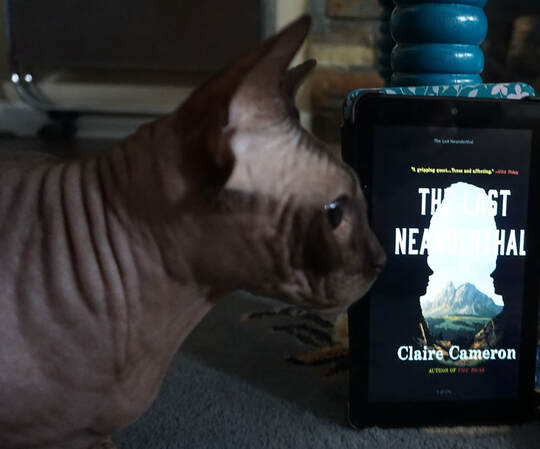
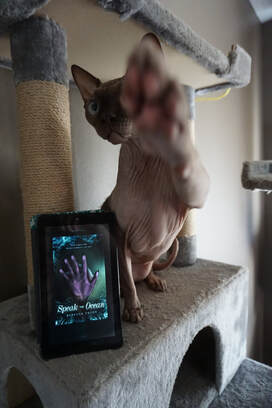



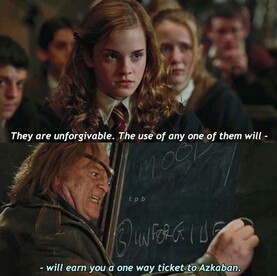
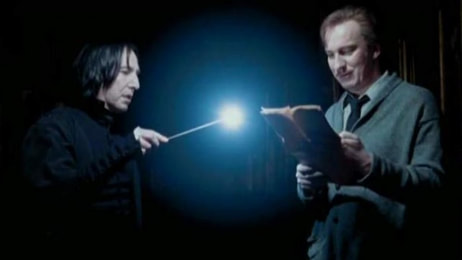
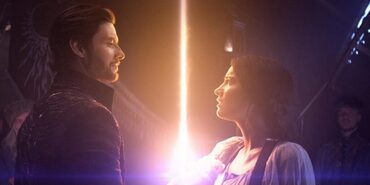
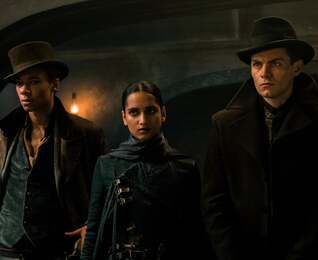
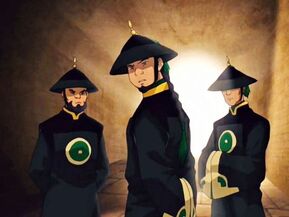
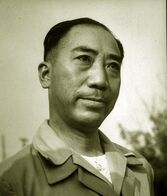
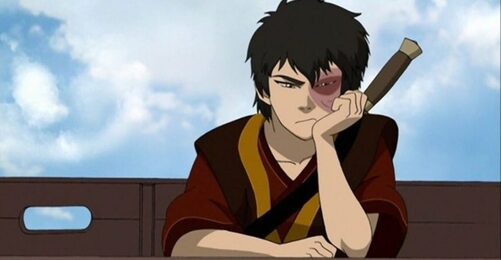
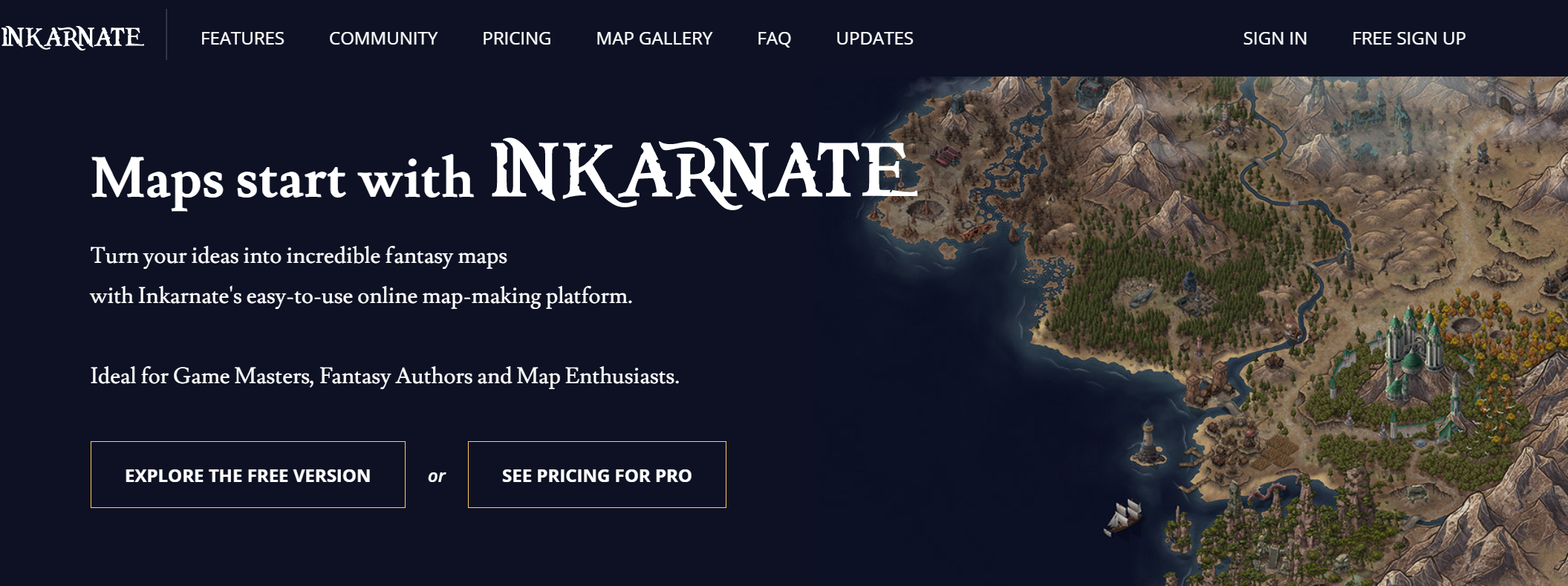
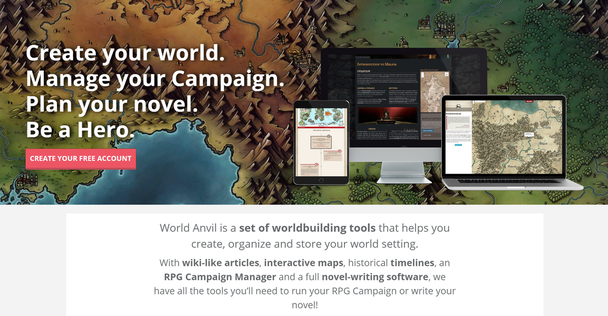

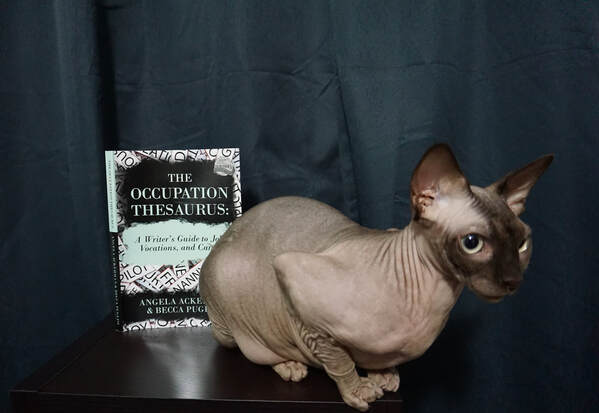
 RSS Feed
RSS Feed